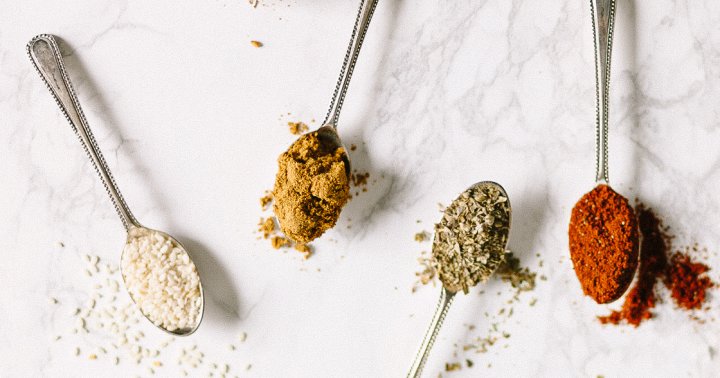These Spots Are Often Confused For Hyperpigmentation (But Here's What They Really Are)
Oh, dark spots, you are unwelcome.


Former Senior Beauty & Lifestyle Editor
Former Senior Beauty & Lifestyle Editor
Jamie Schneider is the former Senior Beauty Editor at mindbodygreen. She has a B.A. in Organizational Studies and English from the University of Michigan, and her work has appeared in Coveteur, The Chill Times, and Wyld Skincare.
Image by Peopleimages / iStock October 07, 2024 We carefully vet all products and services featured on mindbodygreen using our Our selections are never influenced by the commissions earned from our links. Acne can be complicated and aggravating, but what adds a whole new layer of frustration is the present a blemish often leaves behind: Oh, dark spots, you are unwelcome. But did you know that people get their dark spots mixed up? It's true: What you file under "hyperpigmentation" might actually be another form of post-inflammatory trauma, called "erythema." And getting to know your spots is important, as each requires slightly different plans of action. Fading dark spots oftentimes takes even longer than treating the actual breakouts themselves—you don't want to be running off course, here. Here's how to tell whether you're facing post-inflammatory hyperpigmentation or post-inflammatory erythema, and how you should treat the different spots. 
What's the difference?
While both occur after some trauma to the skin—be it acne, rashes, or sun damage—hyperpigmentation happens when the cells that control melanin production become overactive and lead to extra pigment. Erythema, on the other hand, has nothing to do with melanin—it happens when tiny blood vessels in the skin become dilated or enlarged from inflammation.
Essentially: Hyperpigmentation is associated with skin darkening, and erythema is associated with skin redness (in fact, "the medical term for redness is erythema," says board-certified dermatologist Loretta Ciraldo, M.D., FAAD).
The marks will also look a little different depending on your skin tone: If you have lighter skin, the reddish color from post-inflammatory erythema will likely be more noticeable. That's not to say those with darker skin tones can't experience erythema at all.
"Although this process also occurs in brown skin, the darker color of brown skin (combined with hyperpigmentation) makes the redness less obvious," says board-certified dermatologist Ife J. Rodney, M.D., FAAD, founding director of Eternal Dermatology + Aesthetics.
How can you tell which one you have?
As for identifying which marks you have, it can be a little tricky. "These two conditions may occur separately, or you may have both at the same time," Rodney explains. Fun!
For some, differentiating between the two can be as simple as taking a look in the mirror: Hyperpigmentation is often dark in color, and erythema is more red. But oftentimes, it's not that simple; especially for those with darker skin tones, it can be difficult to determine whether what you're seeing is dilated blood vessels or extra pigment (or both).
In comes a clever hack: Press lightly on the area with your finger for a beat. Release your finger, and if the blemish disappears for a moment, it's erythema. If it remains, it's hyperpigmentation. That's because "When you press on the blemish, the blood is temporarily pushed out of the vessel," Rodney explains. "When you remove your finger, the blood fills right back up and the erythema returns."
How to treat each
It's not just nice to know which post-inflammatory condition you have—they actually require slightly different treatments:
For hyperpigmentation, you'll want products that increase cell turnover; Rodney mentions licorice extract, azelaic acid, and mulberry extract to shed dead skin and fade those dark spots. She also recommends adding in brightening ingredients to aid the discoloration, like kojic acid, vitamin C, and arbutin.
Since erythema has to do with enlarged blood vessels, you'll want ingredients that do the opposite. Ciraldo suggests an ingredient that "causes blood vessels to constrict, making the skin less red." Traditional OTC methods contain hydrocortisone, but you can also choose a natural vasoconstrictor, like green tea, which, thanks to its high flavonoid content, also has some brightening properties.
(Better yet, store it in the fridge for a few minutes—cooler temperatures can also help constrict those tiny blood vessels in your face). Lo and behold, vitamin C is also a star ingredient for erythema: "It reduces redness by boosting collagen production in the skin and strengthening the blood walls," says Rodney.
And, of course, proper sun care is a must on both accounts. Dark spots—no matter what kind—get worse from the sun, so protection is key.
The takeaway
Before you can effectively tackle your dark spots head-on, it’s helpful to know what type of marks you actually have. While post-inflammatory hyperpigmentation and post-inflammatory erythema can look similar upon first glance (especially on darker skin tones), there are slight differences between the two that require a closer gaze.

 Lynk
Lynk 






























